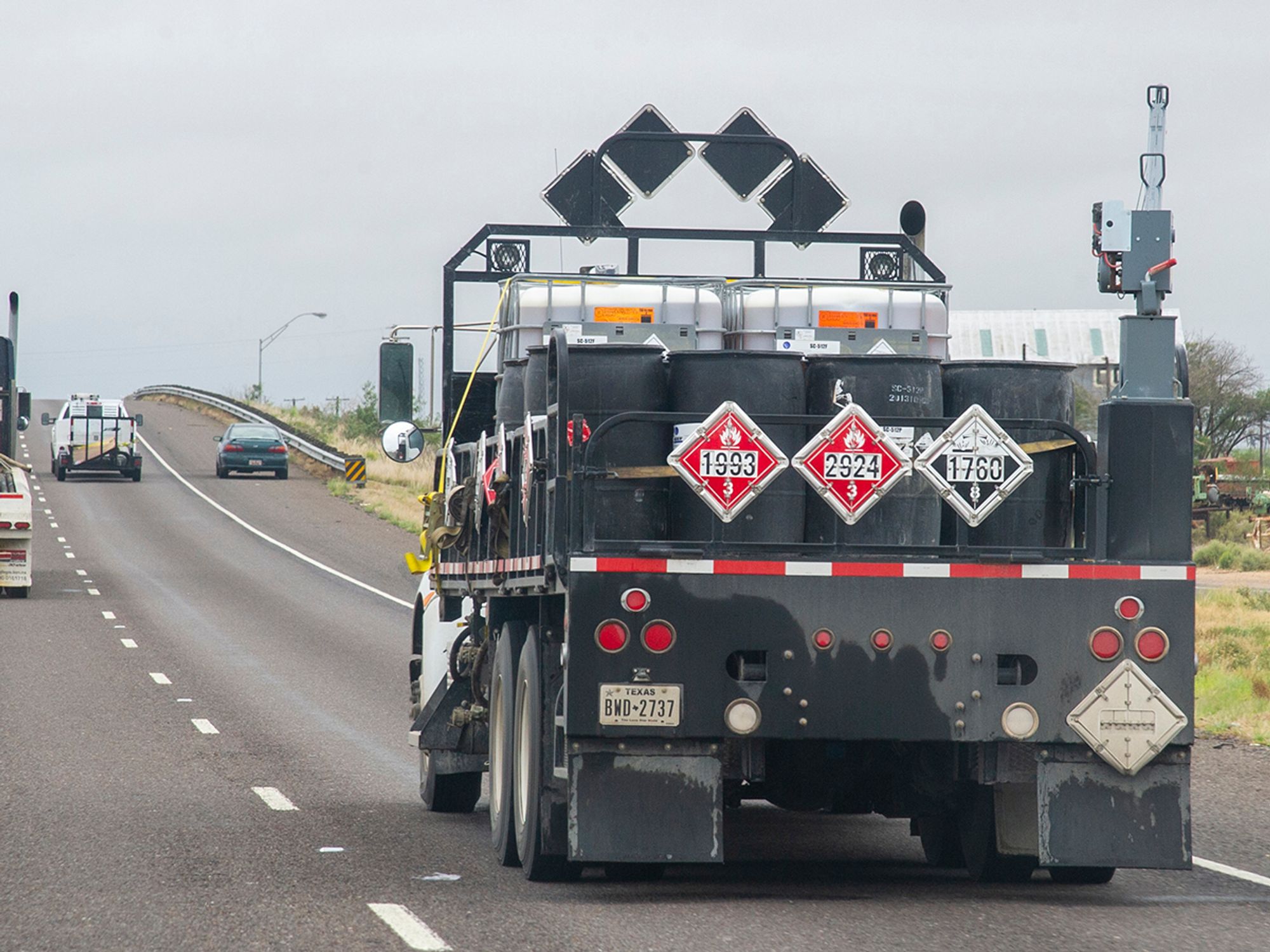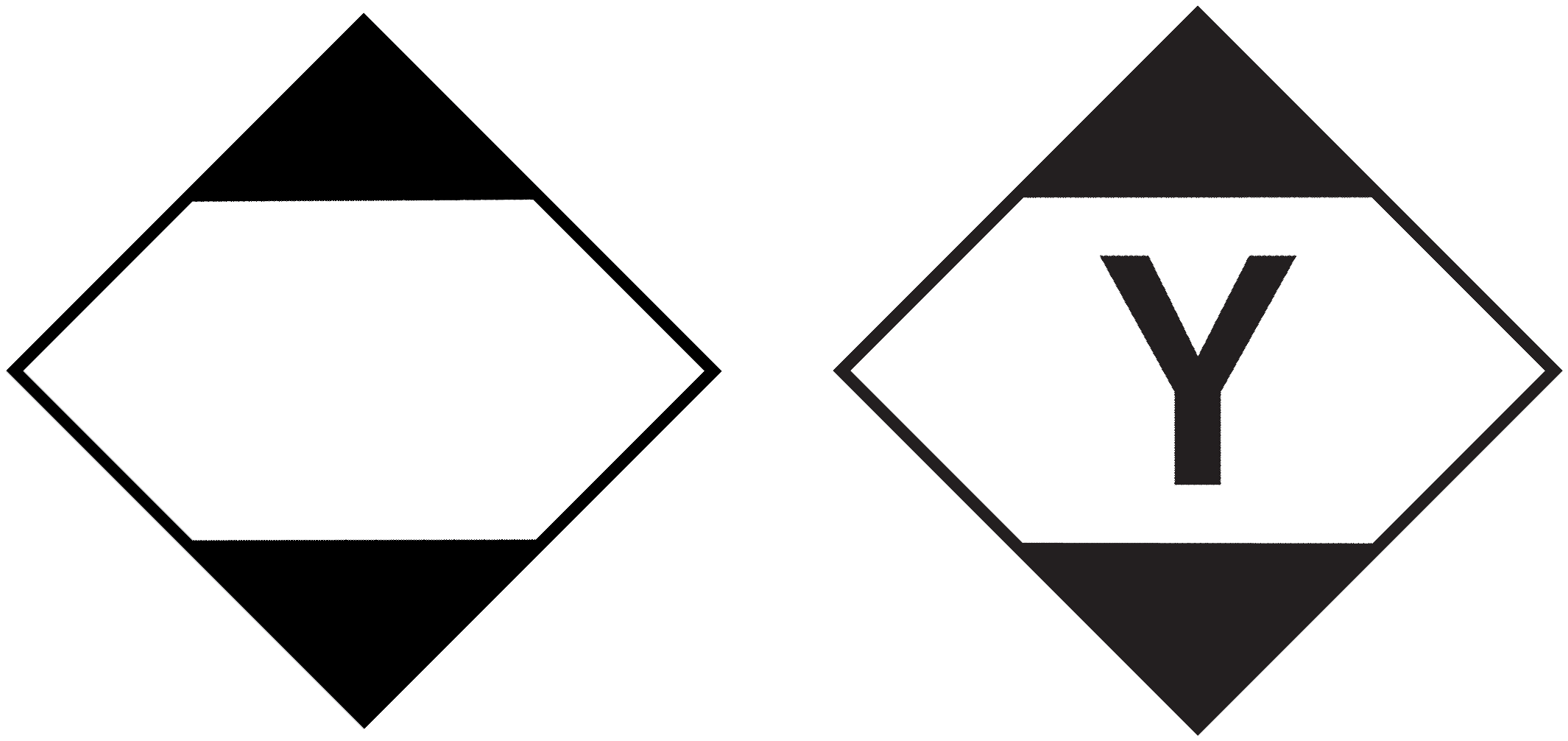Subsidiary placards, and additional markings and signs

- For subsidiary class placards to be displayed on a large means of containment, several criteria must be met.
- Other safety marking requirements include limited quantity and lithium battery displays.
According to Canada’s Transportation of Dangerous Goods (TDG) Regulations, subsidiary class placards must be displayed next to the primary class placard for dangerous goods, on each side and each end of a large means of containment if the dangerous goods require an Emergency Response Assistance Plan (ERAP) and:
- Have a subsidiary class of Class 1, Explosives, in which case the placard is Class 1.1, 1.2, or 1.3;
- Have a subsidiary class of Class 4.3, Water-reactive Substances, in which case the placard is Class 4.3;
- Have a subsidiary class of Class 6.1, Toxic Substances, and are included in Packing Group I due to inhalation toxicity, in which case the placard is Class 6.1; or
- Have a subsidiary class of Class 8, Corrosives, and are UN2977, RADIOACTIVE MATERIAL, URANIUM HEXAFLUORIDE, FISSILE, or UN2978, RADIOACTIVE MATERIAL, URANIUM HEXAFLUORIDE, non-fissile or fissile-excepted, in which case the placard is Class 8.
DANGER placard
Except as provided, a DANGER placard is permitted to be displayed on a large means of containment instead of any other placard if:
- The large means of containment holds two or more dangerous goods that require different placards, and
- The dangerous goods loaded into the large means of containment are held in two or more small means of containment.
Exceptions for using the DANGER placard
The DANGER placard cannot be displayed on a large means of containment for:
- Dangerous goods that have a gross mass greater than 1,000 kg, are included in the same class, and are offered for transport by one consignor;
- Dangerous goods that require an ERAP;
- Class 1, Explosives;
- Class 2.3, Toxic Gases;
- Class 4.3, Water-reactive Substances;
- Class 5.2, Organic Peroxides, Type B, liquid or solid, that require a control or emergency temperature;
- Class 6.1, Toxic Substances, that are subject to special provision 23; and
- Class 7, Radioactive Materials, that require a Category III — Yellow label.
If a road vehicle or railway vehicle to be transported by vessel contains a flammable gas, the flammable gas placard must be displayed on that vehicle.
Additional markings and signs
UN numbers must be displayed on small means of containment and large means of containment as identified in Labels and Placards.
There are other safety mark requirements that may apply in specific instances.
Limited quantity mark
Part 3 (“Documentation”), Part 4 (“Dangerous Goods Safety Marks”), Part 5 (“Means of Containment”), Part 6 (“Training”), Part 7 (“Emergency Response Assistance Plan”), and Part 8 (“Reporting Requirements”) do not apply to handling, offering for transport, or transporting of limited quantities of dangerous goods on a road vehicle, railway vehicle, or vessel if each means of containment is legibly and durably marked on one side, other than a side on which it is intended to rest or to be stacked during transport.
If a limited quantity of dangerous goods is in a means of containment that is inside another means of containment, the inner means of containment is not required to be marked if:
- The gross mass of the outer means of containment is less than or equal to 30 kg;
- The outer means of containment is not intended to be opened during transport; and
- The outer means of containment is legibly and visibly marked, on a contrasting background, with the limited quantity mark.
If a limited quantity of dangerous goods is in a means of containment that is inside an overpack, the following information must be displayed on the overpack unless the marks on the small means of containment are visible through the overpack:
- The word “Overpack” or “Suremballage;” and
- The limited quantity mark, legibly and visibly marked on a contrasting background.
The mark must be square-on-point, and the line forming the square-on-point must be at least 2 mm wide. The top and bottom portions must be black, and the central portion must be white or a contrasting color. Each side of the mark must be at least 100 mm long. The letter “Y” may be displayed in the center of the mark if the limited quantity complies with International Civil Aviation Organization (ICAO) Technical Instructions. If the size of the means of containment so requires, the length of each side may be reduced to not less than 50 mm, provided that the mark remains clearly visible.

Lithium battery mark
For the purposes of special provision 34, the lithium battery mark must indicate:
- “UN3090” for lithium metal cells or batteries;
- “UN3480” for lithium ion cells or batteries; and
- “UN3091” or “UN3481,” as appropriate, for lithium cells or batteries contained in, or packed with, equipment.
If a means of containment carries lithium cells or batteries assigned to different UN numbers, all applicable UN numbers must be indicated on one or more marks.
The mark must be at least 120 mm wide by 110 mm high, and the hatching must be at least 5 mm wide. However, dimensions of the mark may be reduced for a means of containment that is an irregular shape or size if the mark is at least 105 mm wide by 74 mm high and every symbol, letter, and number required on the mark is reduced proportionally.
